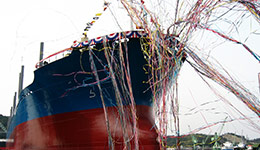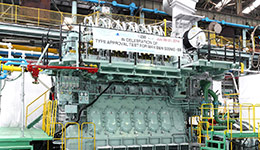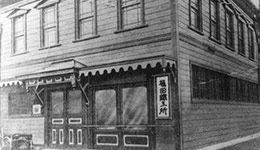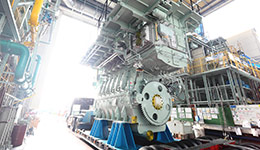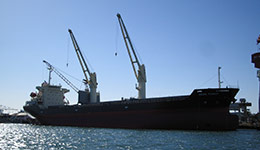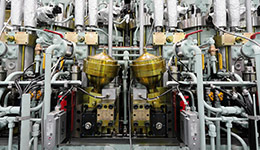From Machine Control to Electronic Control
In recent years, the environment surrounding marine engines has changed significantly. A major factor starting in 2000 was the internationally uniform regulation of emissions for NOx (nitrogen oxide). Since then, primary and secondary hurdles have been raised, and a third set of regulations came into effect in 2016. In order to keep in step with these regulations the structure of the conventional marine engine and the idea of the thing itself has had to be rethought.
Previously, marine engines had been built with a "simple structure" so that in the unlikely event of trouble at sea the general crew would be able to make repairs. There has likewise been a significant effect on the mechanical gas exhaust control structure that used a camshaft to control the amount and timing of fuel injection, which had gone without significant change for many years. But the 80% reduction of NOx required by these new regulations presented circumstances where machine control would clearly no longer be able to meet the standards. For that reason, electronic control was introduced, while working to ensure safety and economic efficiency.
Since 2013 at Makita Corporation, production of the new "ME Series" using electronic control has been ongoing. In that first year, two of Japan's first engines of this new type were completed, the "S46ME-B" and the "S35ME-B." The following year, 2014, saw the successful production of the "S30ME-B"—the first of its type in the world. In 2015 and 2016, the rush to produce new machines continued, and almost all of the newly built engines over the past few years have been electronically controlled engines. It can be said that the curtain has been raised on a new era for marine engines.
Standing at the Turning Point of an Era
Makita Corporation has had the good fortune to become the marine engine manufacturer with a top share of the world market. This was achieved through the completion of the new, original engine, the "Makita-Mitsui-B&W 6L35MC 4080 horsepower" engine in 1982. A variety of skills were learned in working to develop the engine from its blueprints, as well as from troubleshooting measures made after the engine's release, resulting in unique insights and know-how for Makita Corporation. Our members who overcame a number of challenges saw impressive growth as engineers. Having this groundwork has given us a competitive edge that has become the strength of Makita Corporation as a manufacturer, where other companies are not able to immediately replicate our hard work.
We have since converted from the four-stroke, where our former experience lay, to the two-stroke engine. Similarly, we have made advancements in converting from machine control to electronic control engines. These big changes can be described as a paradigm shift for marine engines. From here forward new world standards are being born. For engineers who desire to be at the forefront of manufacturing, this kind of chance comes only once in decades.









